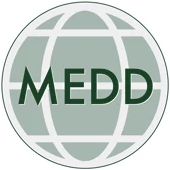Recent U.S. Budget Cuts to Health Agencies: Implications for Healthcare Systems
Summary for Clinicians
Recent federal budget cuts in the U.S. have significantly reduced staff numbers, funding, and research capacity across health agencies such as the CDC and NIH. These reductions threaten disease surveillance, data modernisation, and public health response capabilities. While direct evidence on impacts to Australia is limited, such global shifts in health infrastructure investment merit attention given cross-border health initiatives and research collaborations.
Key Findings from U.S. Budget Cuts
-
Staffing and Operational Cuts
- Federal Layoffs: Approximately 10,000 HHS employees have been laid off, including personnel from the CDC and NIH, under an executive order aimed at streamlining operations [1].
- State-Level Impacts:
- Texas: 21 staff cuts, including epidemiologists in Dallas County, impairing the response to measles outbreaks [1].
- Utah: $98 million in lost grants led to 69 layoffs [1].
- Arizona: A $190 million grant loss risks county health department staffing [1].
- Impact: These cuts have resulted in a reduced capacity for predictive modelling, substance use tracking, and outbreak management [1].
-
Funding Reductions
- COVID-19 Grants: The elimination of $11 billion in pandemic-related grants has adversely affected testing, vaccination, and contact tracing efforts [1].
- Medicaid/Research Threats:
- Risks to Medicaid data accessibility may obscure policy impacts [2].
- NIH funding cuts could disrupt health services research, particularly initiatives focused on equity [2].
-
Research and Data Integrity
- Health Services Research Threats:
- Restrictions have been placed on studies deemed “politicised,” such as those related to Medicaid [2].
- The removal of longitudinal data sets hinders effective policy analysis [2].
- Graduate Training Interruptions: Potential revocation of funds for health services researchers threatens workforce pipelines [2].
- Health Services Research Threats:
-
Public Health Equity and Policy
- Guideline Changes: There is a potential reversal of evidence-based policymaking under the Foundations for Evidence-based Policymaking Act [2].
- Equity Risks: Targeting of “controversial” equity initiatives may exacerbate disparities in underserved communities [2].
Relevant Statistics
| Metric | Detail |
|---|---|
| COVID Grant Cuts | $11 billion eliminated [1]. |
| HHS Savings | $1.8 billion projected savings via restructuring [1]. |
| Medical Debt | 41% of U.S. adults (31 million) incurred debt for healthcare in 2024, totalling $74 billion [3]. |
| Bankruptcy Links | 67% of U.S. bankruptcies are linked to medical debt [3]. |
Implications for Australia
While the provided sources focus on U.S. domestic impacts, potential indirect effects on Australia include:
-
Global Health Initiatives: Reduced U.S. funding for multinational health programs (e.g., infectious disease surveillance) may strain Australia’s participation in collaborative efforts.
-
Research Partnerships: NIH funding cuts could limit joint studies on health systems or cost-effective care models, delaying advancements in universal health coverage strategies [3].
-
Data-Sharing Challenges: Access to U.S. public health data critical for global benchmarks may become restricted, complicating comparative analyses [2].
Sources
- Cuts to Federal Health Agency Raise Concerns About State and Local Impacts (Route Fifty, April 1, 2025). Link
- The Potential Damage from Reducing Support for Health Services Research Is High (BU School of Public Health, April 2, 2025). Link
- Universal Health Care | Pros, Cons, Debate, Arguments, Medicare… (Britannica, April 2, 2025). Link
- The Potential Impacts of Cuts to Medicaid (Johns Hopkins Bloomberg School of Public Health, April 3, 2025). Link
Note: Source [5] (Australia’s health 2018) provides historical context but no direct insights into U.S.-Australia interplay. No additional sources were utilised.
Recommend0 recommendationsPublished in Uncategorized





